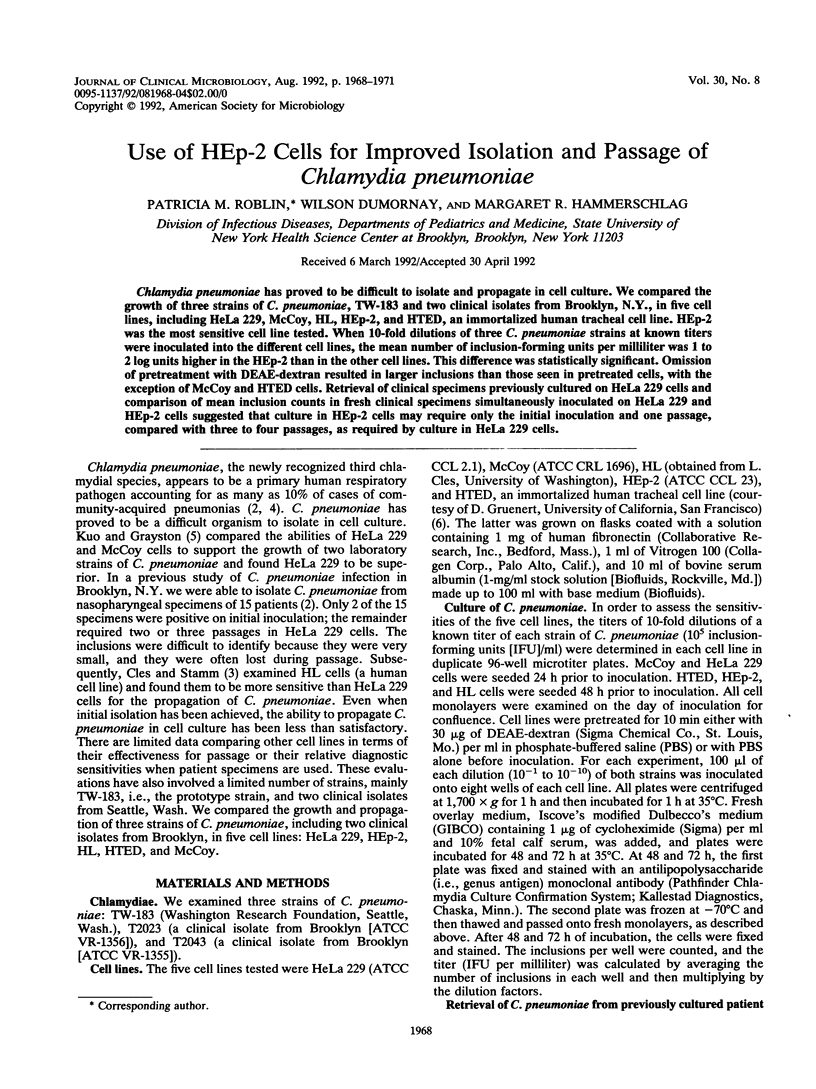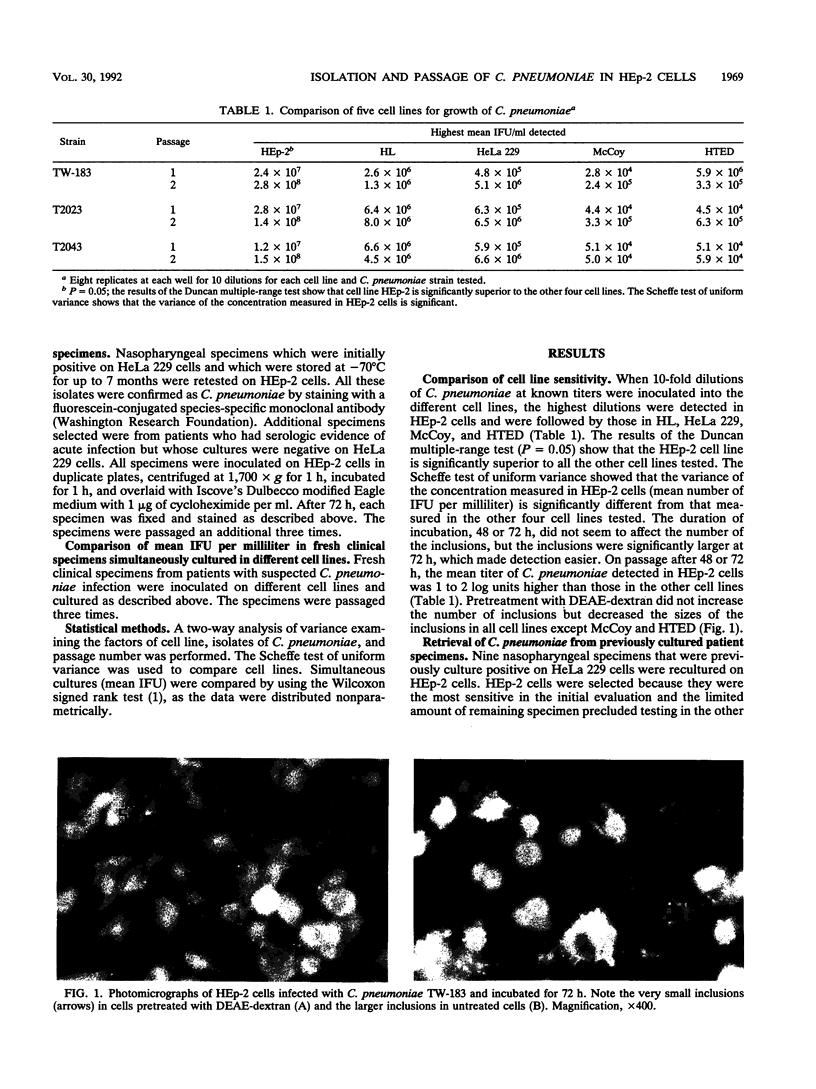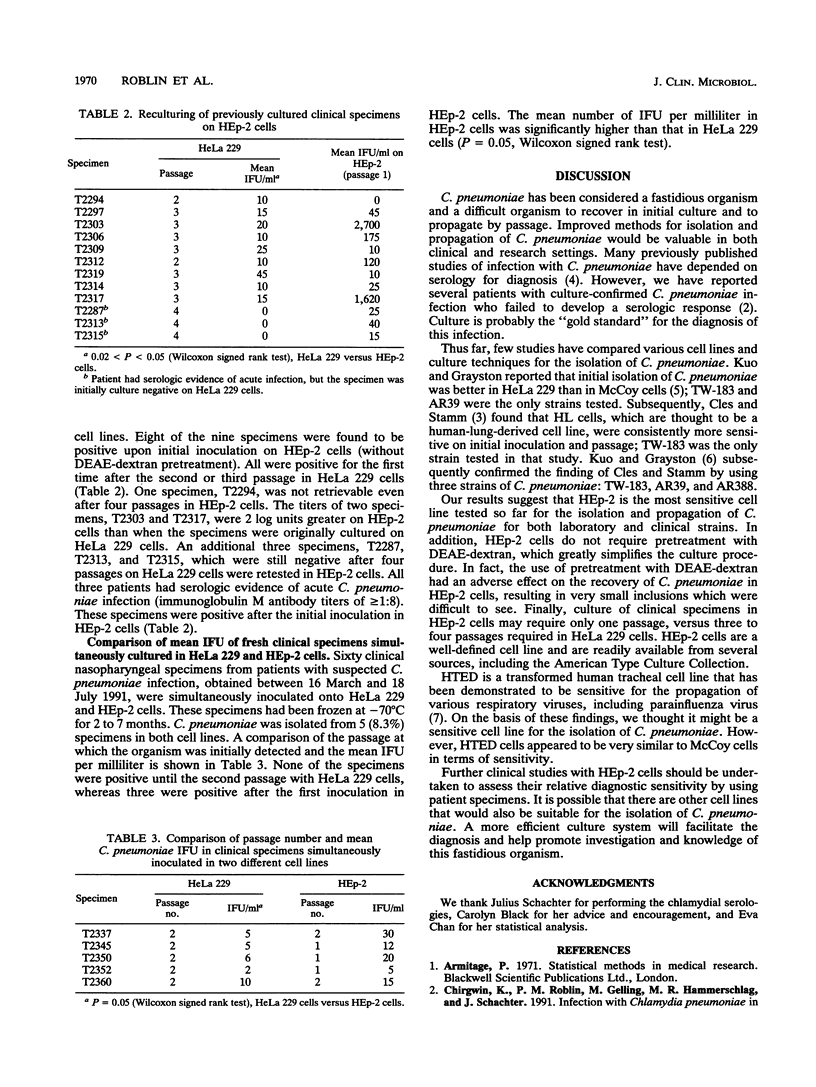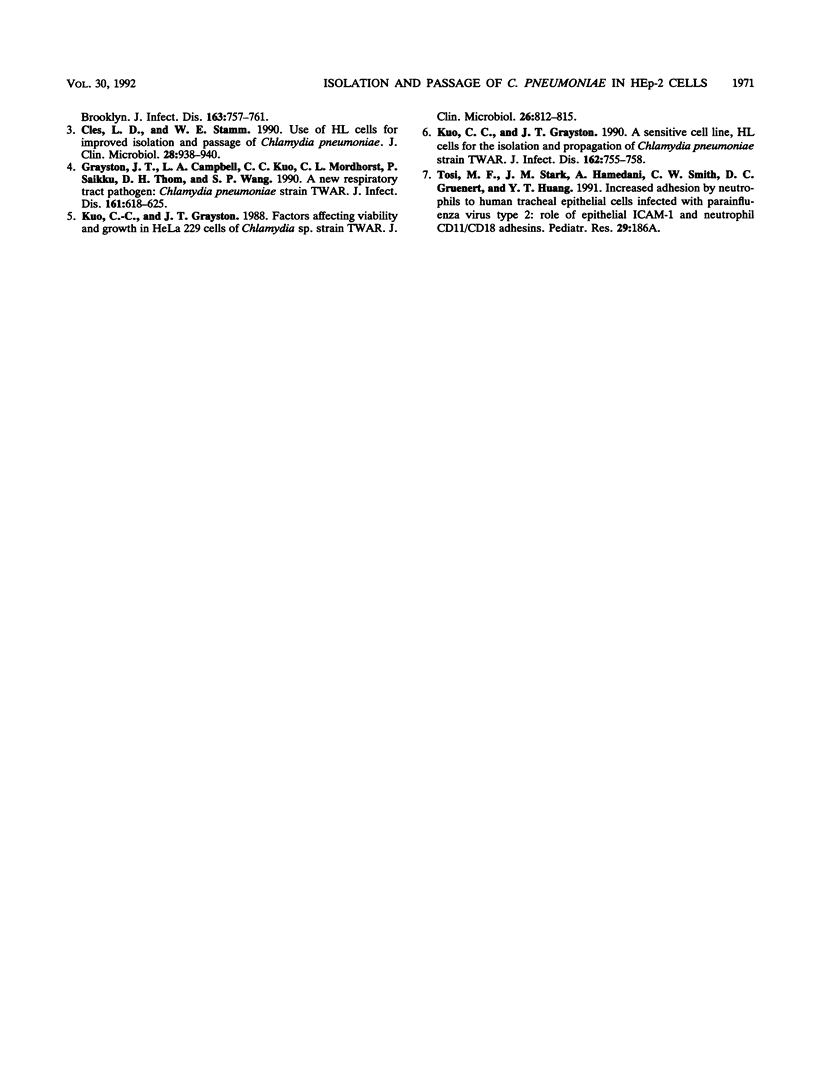Abstract
Chlamydia pneumoniae has proved to be difficult to isolate and propagate in cell culture. We compared the growth of three strains of C. pneumoniae, TW-183 and two clinical isolates from Brooklyn, N.Y., in five cell lines, including HeLa 229, McCoy, HL, HEp-2, and HTED, an immortalized human tracheal cell line. HEp-2 was the most sensitive cell line tested. When 10-fold dilutions of three C. pneumoniae strains at known titers were inoculated into the different cell lines, the mean number of inclusion-forming units per milliliter was 1 to 2 log units higher in the HEp-2 than in the other cell lines. This difference was statistically significant. Omission of pretreatment with DEAE-dextran resulted in larger inclusions than those seen in pretreated cells, with the exception of McCoy and HTED cells. Retrieval of clinical specimens previously cultured on HeLa 229 cells and comparison of mean inclusion counts in fresh clinical specimens simultaneously inoculated on HeLa 229 and HEp-2 cells suggested that culture in HEp-2 cells may require only the initial inoculation and one passage, compared with three to four passages, as required by culture in HeLa 229 cells.
Full text
PDF



Images in this article
Selected References
These references are in PubMed. This may not be the complete list of references from this article.
- Cles L. D., Stamm W. E. Use of HL cells for improved isolation and passage of Chlamydia pneumoniae. J Clin Microbiol. 1990 May;28(5):938–940. doi: 10.1128/jcm.28.5.938-940.1990. [DOI] [PMC free article] [PubMed] [Google Scholar]
- Grayston J. T., Campbell L. A., Kuo C. C., Mordhorst C. H., Saikku P., Thom D. H., Wang S. P. A new respiratory tract pathogen: Chlamydia pneumoniae strain TWAR. J Infect Dis. 1990 Apr;161(4):618–625. doi: 10.1093/infdis/161.4.618. [DOI] [PubMed] [Google Scholar]
- Kuo C. C., Grayston J. T. A sensitive cell line, HL cells, for isolation and propagation of Chlamydia pneumoniae strain TWAR. J Infect Dis. 1990 Sep;162(3):755–758. doi: 10.1093/infdis/162.3.755. [DOI] [PubMed] [Google Scholar]
- Kuo C. C., Grayston J. T. Factors affecting viability and growth in HeLa 229 cells of Chlamydia sp. strain TWAR. J Clin Microbiol. 1988 May;26(5):812–815. doi: 10.1128/jcm.26.5.812-815.1988. [DOI] [PMC free article] [PubMed] [Google Scholar]



